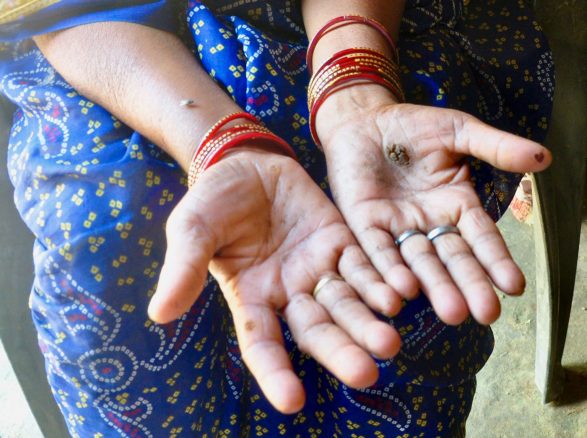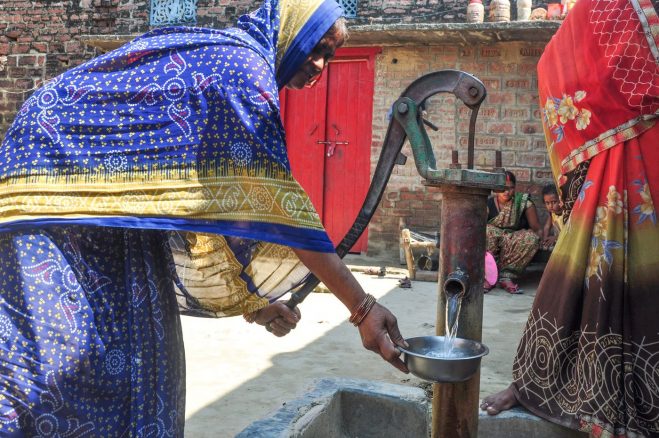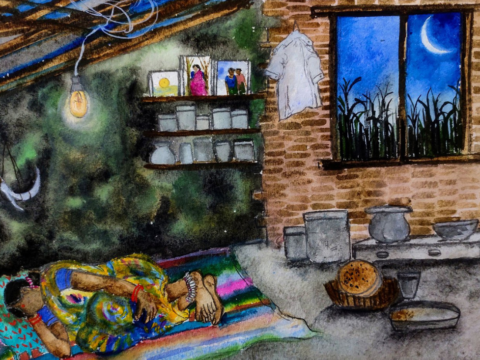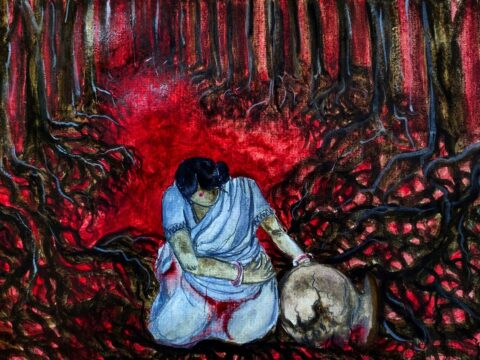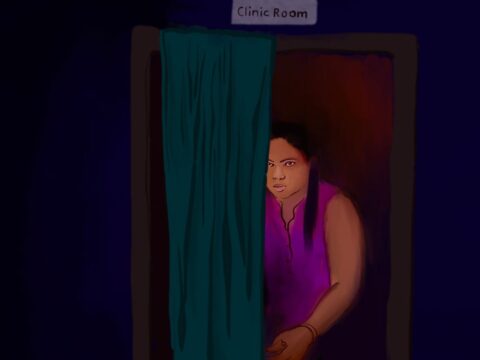
In villages of Bihar with arsenic in groundwater, families like Preeti’s have lost both men and women to cancer, and she too has a breast lump. But women here often face greater challenges in seeking treatment.
The little lump has grown hard, “haddi ki tarah,” bony, says Preeti Yadav.
It’s been over a year since she discovered the pea-sized growth in her right breast in July 2020, and nearly a year since oncologists at a cancer institute in Patna city recommended a biopsy and surgical excision.
But Preeti has not returned to the hospital.
“Karwa lenge [We’ll get it done],” she says, sitting on a brown plastic chair in the tiled verandah of her family’s spacious home with a courtyard and flowering shrubs.
Her words, spoken softly, are tinged with exhaustion. At least four members of her close-knit family have died of cancer in recent years, and her village in Sonepur block of Bihar’s Saran district has recorded several other cases of cancer in a few years before the Covid-19 pandemic began in March 2020. (At her request, the village name is not mentioned and her real name is not being used here.)
The decision about when to get the lump removed surgically is not 24-year-old Preeti’s alone. Her family is close to selecting a groom for her, possibly a young man from a neighbouring village who has a job in the armed forces. “We can get the surgery done after I get married also, right? The doctor said there’s a possibility of the lump dissolving on its own once I have a baby,” she says.
But will they inform the groom’s family about the lump and the possible surgery, the multiple cancer cases in her family? “ Wohi to samajh nahin aa raha ,” she says. That is the knotty issue on which her surgery hinges.
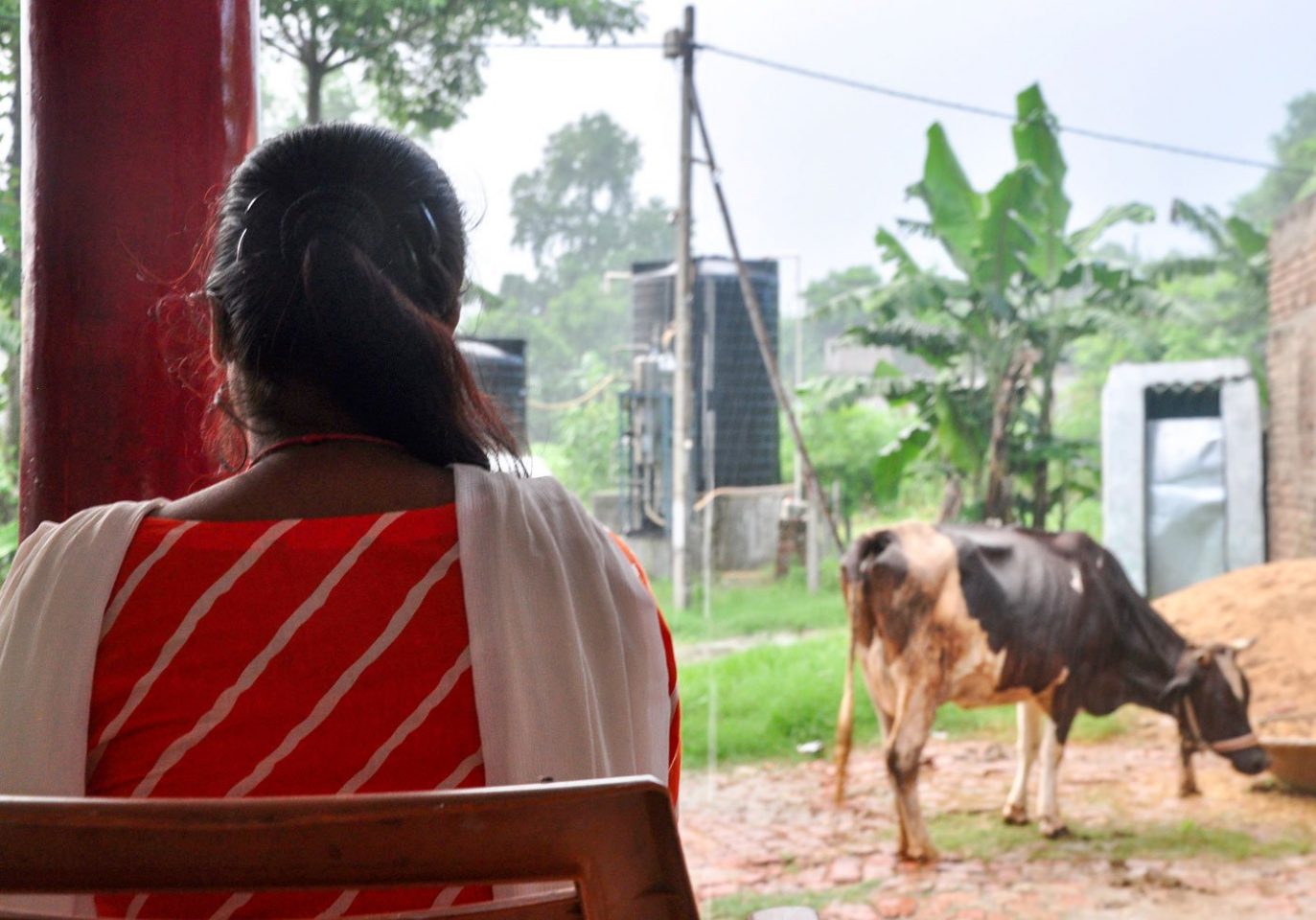
Preeti Kumari: It’s been over a year since she discovered the growth in her breast, but she has not returned to the hospital
For Preeti, who completed a BSc degree in Geology in 2019, the lump and the year that has passed since its appearance have deepened her loneliness. Her father died in November 2016, a few months after being diagnosed with end-stage renal cancer. The previous January, her mother died of a heart attack despite seeking treatment since 2013 at several hospitals with specialised cardiac units. Both were in their 50s. “I’ve been rendered all alone,” Preeti says. “Had my mother been around, she would have understood my problem.”
It was just before her mother died that the family found out, at the All India Institute of Medical Sciences in New Delhi, that the cancers in the family could be related to the water quality in their house. “The doctors there asked about mummy’s mental tensions. When we told them the family history of deaths, they asked many questions about what water we drink. For a few years, the water from our handpump has turned yellow about a half-hour after it is drawn,” says Preeti.
Bihar is one of seven states in India (the others are Assam, Chhattisgarh, Jharkhand, Manipur, Uttar Pradesh and West Bengal) reported to be the worst affected by arsenic contamination of groundwater – beyond safe levels. In Bihar, 57 blocks spread across 18 districts – including Saran, where Preeti’s village is located – were found by the Central Ground Water Board (in two reports in the year 2010, based on the findings of task forces and state government agencies) to have very high arsenic content in groundwater, of more than 0.05 milligrams per litre. The permissible limit is 10 micrograms.
*****
Preeti was just 2 or 3 years old when the family lost her eldest sister. “She had very bad stomach aches all the time. Father took her to many clinics, but couldn’t save her,” she says. Since then, her mother had been under severe stress.
Then, her chacha (dad’s younger brother) died in 2009, and her Chachi (his wife) in 2012. They had all lived in the same large homestead. Both had been diagnosed with blood cancer, and both were told by doctors that they had reported for treatment too late.
In 2013, the same Chacha’s son, Preeti’s 36-year-old cousin, died despite attempting treatment in Hajipur town in adjoining Vaishali district. He too had blood cancer.
With the family torn for years by sickness and death, Preeti bore the weight of home responsibilities. “From around when I was in Class 10, I’ve had to handle the household for long periods when ma and then later dad were sick. There was a phase when every year somebody or the other died. Or somebody became seriously ill.”

Coping with cancer in Bihar’s Saran district
But will they inform the groom’s family about the lump and the possible surgery, the multiple cancer cases in her family? ‘ Wohi to samajh nahin aa raha’ , she says. That is the knotty issue on which her surgery hinges.
Her studies took a backseat while she handled the kitchen for a large, joint land-owning family. When one of her two brothers got married, his wife’s arrival eased the pressure of cooking, cleaning and caring for the sick. To add to the family’s stress, a cousin’s wife was bitten by a poisonous snake and almost died. Then in 2019 one of Preeti’s brothers sustained a serious eye injury in a farm mishap and needed constant care for a couple of months.
When her parents died, Preeti began to feel hopeless. “ Mayoosi thi… bahut tension tha tab .” She had barely begun to recover emotionally when her own lump was detected.
Like everyone else in their village, the family would use water drawn from the handpump without filtering or boiling it. The two-decade-old borewell, around 120-150 deep, has been their source of water for all purposes — washing, bathing, drinking, cooking. “After father passed away, we have been using RO filter water for drinking and cooking,” Preeti says. By then, with several studies speaking of arsenic poisoning from groundwater, people in the district had begun to be aware of the contamination and its dangers. RO purification systems, with regular maintenance, show some degree of success in filtering out arsenic from drinking water.
The World Health Organisation has, since as early as 1958, maintained that long-term intake of water contaminated by arsenic leads to arsenic poisoning or arsenicosis, with risks of cancer of the skin, bladder, kidney or lung, and also of diseases of the skin including discoloration, and hard patches on the palms and soles. The WHO has also said that evidence indicates possible links between intake of contaminated water and diabetes, hypertension and reproductive disorders.
Between 2017 and 2019, the Mahavir Cancer Sansthan and Research Centre in Patna, a private charitable trust, collected blood samples of 2,000 randomly selected cancer patients at its out-patients department, and found blood arsenic levels in carcinoma patients to be high. A geospatial map correlated the blood arsenic with cancer types and demographics in the Gangetic plains.
“Most of the cancer patients with high blood arsenic concentration were from the districts [including Saran] near the river Ganges. Their raised blood arsenic concentration strongly correlates to the relationship of arsenic with cancer, especially carcinoma,” says Dr. Arun Kumar, a scientist at the institute who has co-authored multiple papers on this research.
‘Even if I leave for a few days, people will know, it’s a small village. If I go away to Patna for surgery, even for a few days, everybody is going to find out’
“Our institute registered more than 15,000 cancer cases in the year 2019,” the study’s January 2021 report notes. “The epidemiological data showed that most of the cancer cases reported were from the cities or towns which are located near the river Ganga. The most incidences of cancer cases were from the districts – Buxar, Bhojpur, Saran, Patna, Vaishali, Samastipur, Munger, Begusarai Bhagalpur.”
While Preeti’s family and village in Saran district have lost both men and women to cancer, young women can face exceptional challenges in visiting oncologists. There is a deep stigma associated with cancer, especially for young girls. As one of Preeti’s brothers says, “People in the village tend to talk…The family has to be careful.”
“Even if I leave for a few days, people will know, it’s a small village. If I go away to Patna for surgery, even for a few days, everybody is going to find out,” Preeti adds. “I wish we had known from the beginning that there is cancer in the water.”
She remains hopeful of finding a loving husband – and anxious whether the lump could come in the way of that happiness.
*****
“Will she be able to breastfeed a baby?”
That was the question in Ramuni Devi Yadav’s mind looking at a 20-something woman, married only six months previously, who lay a few beds away from her own in a Patna hospital ward. It was the summer of 2015. “At least my breast surgery was being done at an advanced age. I got breast cancer long after all four of my sons had become adults. But what about the young girls?” 58-year-old Ramuni Devi asks.
The Yadavs own about 50 bighas of land (around 17 acres) in Badka Rajpur village of Simri block in Buxar district, roughly 140 kilometres from Preeti’s village, and are influential in local politics. Six years since her successful battle with breast cancer, Ramuni Devi plans to contest elections to the post of mukhiya (chief) in the Rajpur Kalan panchayat (within which her village is located), if polls are held later this year after a Covid-induced delay.
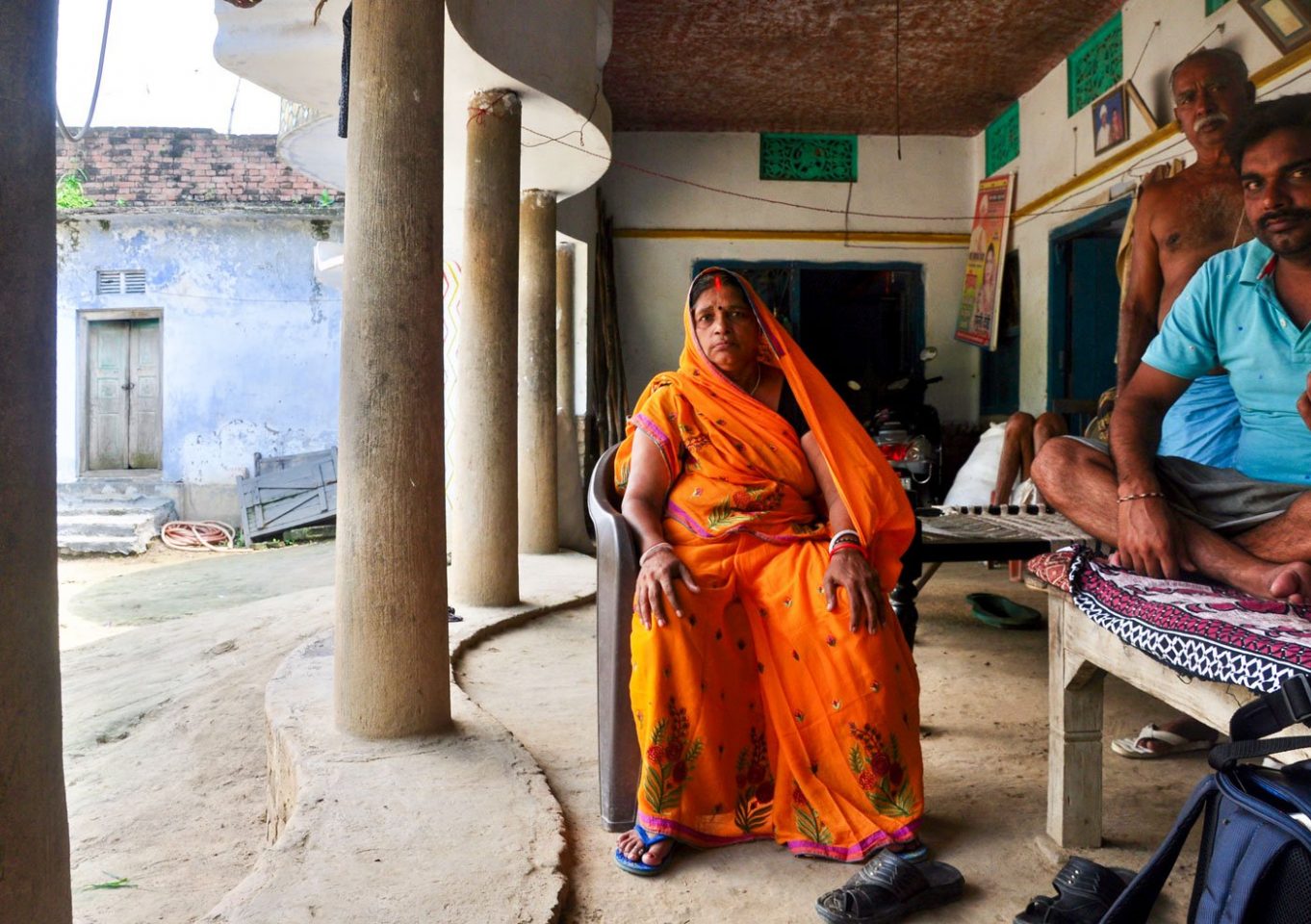
Ramuni Devi Yadav: ‘When a mother gets cancer, every single thing [at home] is affected, nor just the mother’s health’
Ramuni speaks only Bhojpuri, but her sons and husband Umashankar Yadav readily translate for her. Badka Rajpur has several cases of cancer, says Umashankar. The 18 districts in which 57 blocks have very high arsenic content in groundwater, according to the Central Ground Water Board report, include Buxar district.
Walking around her farmland where a small truckload of jackfruit and sacks of Malda mangoes have just been harvested, Ramuni says her family didn’t let her find out how serious her condition was until the last surgery was over and she began to undergo radiation treatment.
“Initially, we didn’t know what it was and our lack of awareness caused a lot of trouble,” she says, describing a first botched surgery in Benares in neighbouring Uttar Pradesh, where the Yadavs have a family. The lump was removed but returned and continued to grow, causing severe pain. They went back to Benares the same year, 2014, to the same clinic, where the same surgical excision was repeated.
“But when we went to get the bandage changed at our local doctor’s clinic in the village, he said the wound looked dangerous,” says Umashankar. The Yadavs visited two more hospitals before somebody directed them to Patna’s Mahavir Cancer Sansthan in mid-2015.
The months of hospital rounds and repeated trips out of her village disrupted normal family life entirely, says Ramuni. “When a mother gets cancer, every single thing [at home] is affected, nor just the mother’s health,” she says. “I had only one daughter-in-law at the time, the three younger boys got married only later. And she could hardly manage everything.”
Her sons too had bouts of skin diseases, which they now blame on the turbid water from the hand pump – their 100-150 feet borewell is around 25 years old. As Ramuni underwent chemotherapy, surgeries and radiation therapy, there was always chaos at home. One son was in and out of Buxar as he returned to his Border Security Force posting, another son’s job as a teacher in a neighbouring village kept him busy for long hours during the day, and there was farmland to look after.
“After my last surgery, I saw this newly married woman in my hospital ward. I approached her, showed her my scar and told her there’s nothing to worry. She too had breast cancer, and I was happy to see that her husband was looking after her so well though they’d only been married a few months. The doctor later told us that she would indeed be able to breastfeed. I was so happy to hear that,” Ramuni says.

Ramuni Devi and Umashankar Yadav at the filtration plant on their farmland; shops selling RO-purified water have also sprung up
Her son Shivajit says the groundwater in Badka Rajpur is severely contaminated. “We didn’t realize the connection between health and water until our own mother was seriously ill. But the water here has a strange colour. Until 2007 or so everything was fine, but after that we noticed the water turning yellowish. Now we use groundwater only to wash and bathe,” he says.
For cooking and drinking, they use water from a filtration plant donated by a few organisations. It’s used by around 250 families but was installed (on the Yadavs’ land) only in September 2020, while several reports indicate the groundwater here has been contaminated since at least 1999.
The filtration plant has not been very successful. In the summer, people in the village they say, its water gets too warm. Shops selling RO-purified water for Rs. 20-30 per 20-litre plastic jar have also sprung up in nearby villages, says Shivaji, adding that nobody knows whether that water is really free of arsenic.
Studies have shown that much of the arsenic-affected river plains in northern and eastern India surround river routes originating in the Himalayas. The source of the poisonous contaminant in the Gangetic plains has geological origins — arsenic is released from innocuous minerals such as arsenopyrites due to oxidation in shallow aquifers. The lowering of the water table due to over-exploitation of groundwater for irrigation could be related to the rising contamination in some villages, according to studies. These also point to other reasons:
“We suggest that there are several more likely sources of sedimentary arsenic, including the Gondwana coal seams in the Rajmahal basin, which contain up to 200 parts per million (ppm) of arsenic; isolated outcrops of sulphides in the Darjeeling Himalayas, which contain up to 0.8% arsenic; and other sources in the upper reaches of the Ganges river system,” S. K. Acharyya, formerly of the Geological Survey of India, and others wrote in a paper in Nature magazine in 1999.
The studies note that shallow and much deeper wells have less arsenic contamination – while those contaminated are in the 80 to 200 feet deep range. Dr. Kumar says this ties in with people’s experiences in villages where his institute continues to test water samples for a wider study – rainwater and shallow dug wells show lower or no arsenic contamination, while borewell water in the summer months is discoloured in many households.
*****
Kiran Devi, who lost her husband in 2016, has hardened and discoloured spots on her palms, a sign of arsenic poisoning. ‘I know it’s the water…’ she says
About four kilometres north of Badka Rajpur is Tilak Rai Ka Hatta, a village of 340 households in Buxar district, most of them landless families. Here, very murky water flows from hand-pumps outside some homes.
In 2013-14, a study done by the Mahavir Cancer Sansthan in this village showed a high concentration of arsenic in the groundwater, more so in the western parts of Tilak Rai Ka Hatta, says Dr. Kumar, the lead researcher. Common symptoms of arsenicosis were “widely observed” in the village: 28 percent had hyperkeratosis (lesions) in their palms and soles, 31 percent had skin pigmentation or melanosis, 57 percent had liver-related problems, 86 percent had gastritis, and 9 percent of women had irregular menstrual cycles.
Kiran Devi’s husband lived in this village in a detached cluster of brick and mud homes known as Bichoo Ka Dera. “He died in 2016 after several months of abdominal pain,” she says. The family took him to doctors in Simri and Buxar towns, and received varying diagnoses. “They said it was tuberculosis. Or liver cancer,” says Kiran, who is in her 50s. They own a tiny piece of land, but her husband’s main source of income was working as a daily wage labourer.
Since 2018, Kiran Devi has had hardened and discoloured spots on her palms, a sign of arsenic poisoning. “I know it’s the water, but where should I go for water if I can’t use our own pump?” Her handpump is located just outside her home, beyond a small enclosure where a solitary bullock is chewing cud.
She says the quality of water is worse in the non-monsoon period (November to May), when it is like a cup of watery tea. “We are struggling for even meals. How can I travel to Patna for a doctor or tests?” she asks. Her palms are terribly itchy, and they burn when she touches a detergent bar or collects the day’s dung from the animal enclosure.
“Women and water are closely related,” Ramuni says, “because both are at the centre of households. So if the water is bad, it’s natural that women will be worst affected.” Umashankar adds that the stigma of cancer keeps many, especially women, from seeking treatment until it is too late.
The village anganwadi, they tell me, conducted an awareness drive about water quality soon after Ramuni was detected with breast cancer. She plans to do more of that if elected mukhiya. “Not everyone can afford to buy RO water for their homes,” she says. “And not all women can go to the hospital easily. We will keep trying to find other ways out of this.”
PARI and CounterMedia Trust’s nationwide reporting project on adolescent girls and young women in rural India is part of a Population Foundation of India-supported initiative to explore the situation of these vital yet marginalised groups, through the voices and lived experience of ordinary people.
Want to republish this article? Please write to zahra@ruralindiaonline.org with a cc to namita@ruralindiaonline.org

